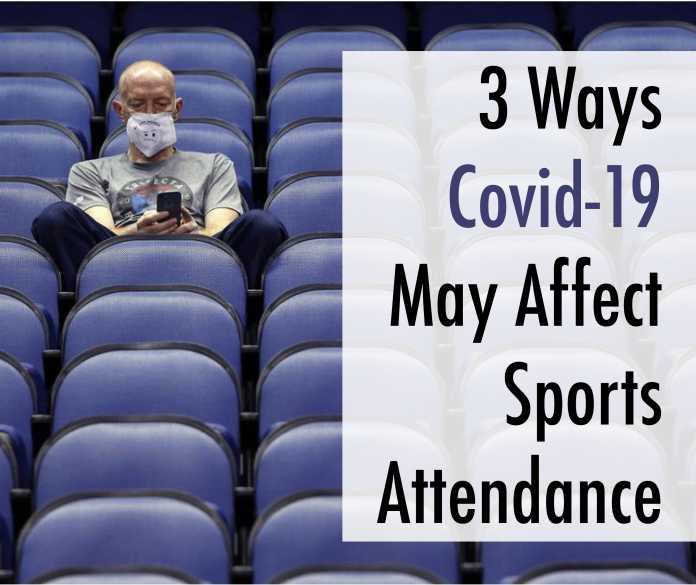3 Ways COVID-19 May Affect Sports Attendance
Take a trip to your local grocery store right now and you’ll see how this virus is affecting our social behaviors. Most people are wearing masks, designated marks on the floor highlight a 6-foot distance between customers, and employees are all wearing gloves. This is just for grocery shopping. How is this virus going to affect other aspects of our lives, specifically sports, post-pandemic?
Life is going to change as we know it, whether we like it or not. The lockdown may be lifted soon, but the effects will linger for quite a long time, possibly forever. The new restrictions may be strenuous; however, they’re necessary to prevent another, potentially more deadly outbreak.
Sporting events, save for the UFC, have been shut down. The NBA season might be scrapped altogether, and concerns around college football being delayed are now beginning to surface. Once sports begin to open up, what can we expect to change so that we can again attend a live competition?
Masks, Masks, and More Masks
“Wearing a mask won’t actually keep you from getting sick. They’re hard to breathe in and don’t stop a virus from infecting you!” Yes, that might be true. A mask will not keep you entirely safe from an invasive virus. It does, however, keep you from spreading the virus to those around you via your breath.
Some sporting events have over 100,000 fans in attendance at one time, condensed into a single arena. Whether it’s an outdoor or indoor arena, that’s a lot of humans to herd together. If even a single person is sick, they could transfer it to thousands of people in a matter of hours. With the potential of a deadly virus, such as the coronavirus, we should expect this scenario to be prevented at all costs. Any time you attend a sporting event now, expect to see a large percentage of fans wearing masks.
Empty Seats
Social distancing has reached its peak. No more handshakes when meeting someone, a simple head nod will do.
Keeping 6 feet apart may translate to having an empty seat or two between you and the next closest fan. To prevent the spread of the virus, we may witness a shift in seating arrangements at live sporting events. Families or friends attending sporting events may have the opportunity to purchase seats next to one another, but strangers may become separated from one another.
Empty rows or sections could be enforced to ensure another breakout cannot happen. Although this translates to less money for sport organizations, state laws may enforce these restrictions with little room for negotiation. Aerial views of packed stadiums may look much different than they did just a year ago.
More Streaming
The easiest way to stay healthy is to avoid large crowds. One cough in a crowd could lead to a hundred hospital visits.
The UFC is currently the only major sports organization that’s still producing live events. They’ve followed strict guidelines, restricting any fan attendance in their arenas. Fighters who normally walk out to screaming fans now experience an empty venue. All the viewership of their events comes from airing them live on ESPN+ and pay-per-view.
Whether it’s due to government enforced regulations, or simply out of fear of getting sick, many fans may choose to bypass attending a live sporting event in favor of their TV and couch. This means streaming services for sporting events have the potential to grow substantially.
Only time will tell how COVID-19 will affect sports attendance. The world has changed, and we must change with it. If we don’t start taking the necessary precautions now, we may lose millions to the next pandemic.
Written by: Cameron Jones



